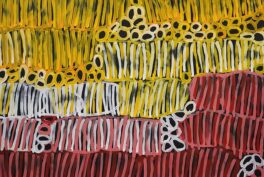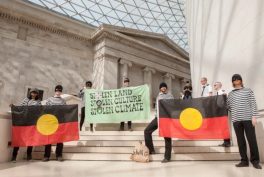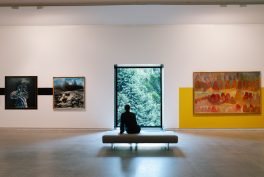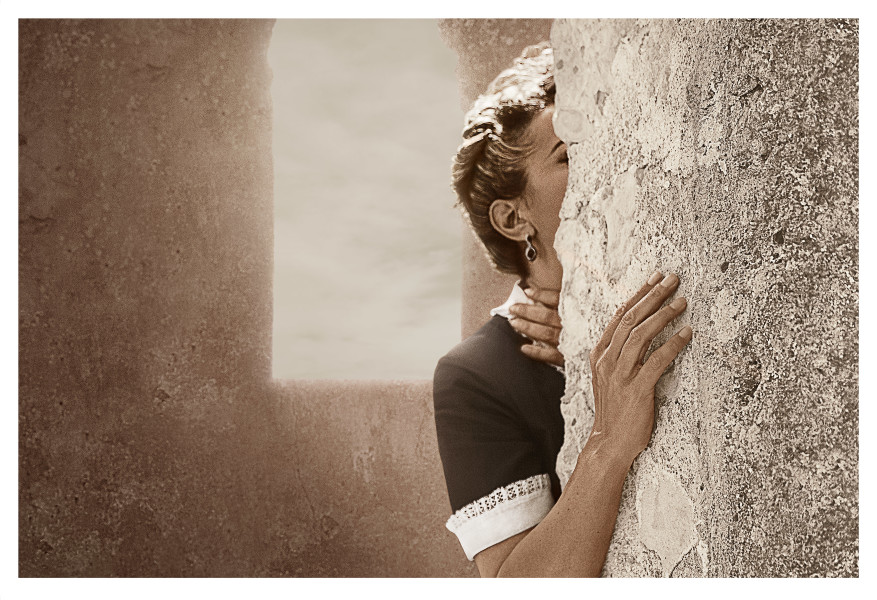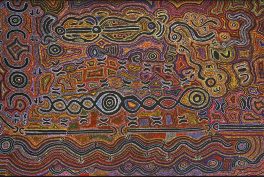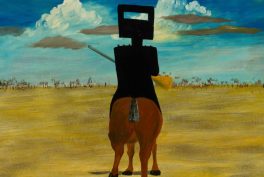1. Emily Kame Kngwarreye
Emily Kame Kngwarreye (also spelt Emily Kam Kngwarray) (1910-1996) is one of the most significant contemporary Australian artists. Raised in the remote desert area of Utopia (Northern Territory), Kngwarreye’s profound spiritual connection to her land and culture manifests in her work through bold colors and abstract forms.
As an Anmatyerre elder and custodian of the women’s Dreaming sites in Alhalkere, her art drew on deep inspiration and creative power from her cultural background and the Dreaming (a religio-cultural worldview associated with Australian Aboriginal beliefs by anthropologists). Despite having limited contact with the outside world for most of her life, Kngwarreye gained global recognition around the age of 80. She produced over 3,000 paintings in just eight years. Her works have been featured in major international galleries as a testament to her impact on the art world.
2. Sidney Nolan
Sidney Nolan (1917-1992) is known as one of Australia’s leading 20th-century artists. Although he attended the National Gallery of Victoria’s School of Art, Nolan largely taught himself from books on Pablo Picasso, Paul Klee, Henri Matisse, and the Surrealists.
Nolan’s art is where historical narratives and modernist styles meet. His subject matters range from national identity to local scenery. These vibrant, compositionally striking, and convention-defying works encapsulate tales of loss, failure, war, and captivity across Australia. His series on Australian legends are most well-known, especially the bushranger Ned Kelly, to the point that the stylized portrayal of Kelly’s armor has become a symbol of Australian art. As a prolific artist working across various media, Nolan created a diverse body of work that has had a lasting impact on national and international art scenes.
3. Tracey Moffatt
Contemporary artist Tracey Moffatt (b. 1960) gained national and international recognition for her works in moving pictures and still photography.
In a career of over thirty years, Moffatt produced hundreds of photographs and films that consolidated her reputation as a powerful visual storyteller. Her narratives, often implicit and self-referential, delve into childhood memories and broader themes of race, gender, sexuality, and identity. In 2017, Moffatt became the first Indigenous Australian artist featured at the Venice Biennale. This further confirmed her international stature.
4. Brett Whiteley
Brett Whiteley (1939-1992) contemplated love, loss, and the human condition. He won the Archibald, Wynne, and Sulman prizes twice and was the first artist to win three in one year in 1978. But what made Whiteley famous among his contributions in painting, sculpture, and graphic arts was his sensual and lyrical depictions of interiors, nudes, and harbor scenes.
His career soared due to his celebrity status both in Australia and internationally. To some extent, his art was deeply intertwined with the tumultuous life fame gave him, and part of it had to do with his heroin addiction. Still, Whiteley’s unique style and exceptional use of color and form have secured his place among the most esteemed Australian artists. The Brett Whiteley Studio in Sydney preserves his legacy.
5. Albert Namatjira
The Arrernte artist Albert Namatjira (1902-1959) pioneered contemporary Indigenous Australian art before gaining global recognition for it. Namatjira is best known for his exquisite watercolor landscapes that capture the Australian outback’s beauty.
Namatjira embraced Christianity early in life, so he took influence from both Western forms and Aboriginal cultural elements. That way, his art can appeal to Indigenous artists in the mainstream art world and meanwhile inspire the Hermannsburg School of Art. Painting-wise, vibrant, contrasting landscapes with purple mountains and bright white trees are Namatjira’s favorites. Queen Elizabeth II was fond of his works, leading him to be awarded the Queen’s Coronation Medal in 1953.

